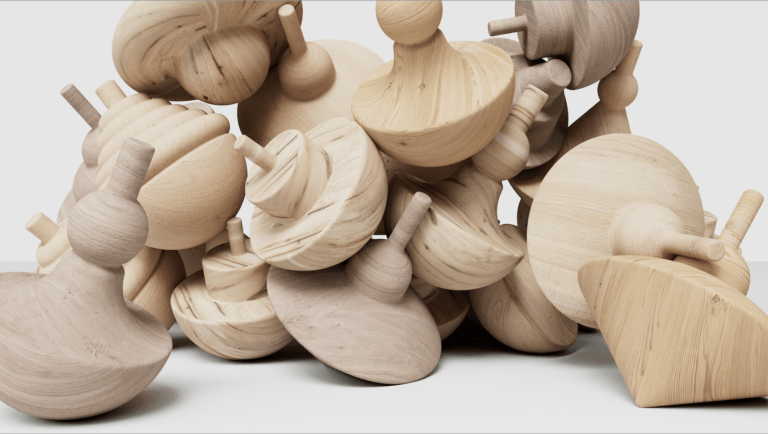Learn about sustainable design through the projects presented at the most recent edition of the fair
The future of design is green. And the innovative projects presented at MFR2023 are proof of this, like those of ReMade Community Lab, Light Wheel and Glimoire Jewelry. Here’s a closer look at them!
The growing tendency to move toward a circular economy was one of the pillars of this edition of Maker Faire Rome, where makers and presenters showed evidence of the necessity to funnel human ingenuity into the development of new solutions that meet the difficult challenges of the present. A new type of design – sustainable design – was born out of the need to address these issues and be more attentive to the fragility of the environment. This was also a protagonist of the fair.
In this article we will learn more about its important role in the new circular economy and explore some of the projects that showcased sustainability during Maker Faire Rome 2023.
What is the Circular Economy and how did it start?
The circular economy is a new approach to production and consumption that is a complete departure from the traditional, linear model. Central to this new paradigm is the desire to eliminate waste and maximize resource use through practices such as recycling, reuse and regeneration. A model that works in the opposite way compared to our conventional system, in which products are manufactured, used and then discarded. The circular economy aims to close the life cycle of materials, allowing them to retain sustainable value. Sustainable design, promotion of reuse and integration of innovative technologies are key pillars of this vision, which aims to transform our society into a more conscious, efficient and ecologically responsible community. This is a necessary step for the good of our planet.
The role of sustainable design and its advantages
Sustainable design, a protagonist of Maker Faire Rome 2023, is an innovative practice that aims to give life (or new life) to products with a reduced environmental impact, while respecting social and economic aspects. It was developed as a response to growing concerns about the depletion of natural resources, climate change and the negative impacts of traditional manufacturing practices. Sustainable design is a new approach to design that considers the entire life cycle of a product, from raw material selection to production, use and end of life. Sustainable design generates a number of significant benefits that extend from the environmental to the social and economic spheres. Here are a few examples:
- Reducing the environmental impact of products. Sustainable design aims to minimize the use of non-renewable natural resources, reduce greenhouse gas emissions, and limit waste generation, contributing significantly to environmental conservation and climate change mitigation.
- Saving resources. Sustainable design promotes the responsible use of materials, encouraging the adoption of those that are recyclable, renewable and have a low environmental impact. This helps to limit dependence on exhaustible raw materials.
- Economic innovation. Sustainable design stimulates economic innovation by encouraging the development of new technologies, materials and practices. Businesses that adopt sustainable strategies can enjoy a competitive advantage in the increasingly environmentally sensitive marketplace.
- Benefits for people and communities. Sustainable design aims to design products or services that ensure that everyone can access the resources they need and keep their health and safety intact. This makes communities resilient as well as able to meet the challenges of the present and future.
Projects presented at Maker Faire Rome 2023
Maker Faire Rome 2023 played a key role in showing how innovation and design can be employed for the benefit of the environment and people. During this edition, we learned the stories of several groups that share a passion for new sustainable design, dedicating their business entirely to it. Here are some projects that left a strong impression:
-
ReMade Community Lab: a world where waste is a resource
ReMade Community Lab is a project that aims to transform urban waste into resources through processes of design, recycling and advanced manufacturing (manufacturing 4.0). This social promotion association is committed to the dissemination of ecological thinking while fostering digital culture. The intent is to generate micro-manufacturing activities from urban plastic waste, using low-complexity recycling and manufacturing techniques through digital manufacturing. But how are ReMade’s products conceived? Through a co-design process that helps build relationships and new identities in the local community, particularly in the Rione Sanità neighborhood of Naples.
-
Light Wheel, recovering of discarded scooter parts
Light Wheel is a project that demonstrates how the recovery and reuse of discarded scooter parts can reduce environmental impact and promote social innovation. Using an open source board, the Officine Zero team creates prototypes of manual wheelchairs for people with disabilities, offering low-cost autonomous mobility solutions. The board offers advanced functionality and safety with speed controls, anti-tip, warning and anti-collision sensors. The joystick-controlled wheelchair is powered by a Light Wheel platform, 36V brushless motors, and battery packs remanufactured from decommissioned scooters.
-
Sweeties Handmade, from sweets to artistic boxes
Marzia Grammatico, with her Sweeties Handmade project, transforms traditional pastry and cake design into useful works of art for everyday life. Using reclaimed materials such as ricotta cheese jars and fabrics such as pannolenci, she creates handmade boxes of different shapes, imitating famous sweets such as cupcakes or charlotte. Using this technique, she reproduces the visual and sensory effects of sweets, transforming everyday objects into unique and original works of art.
Glimoire – Gioielli d’Altri Tempi
Marco Magliozzi, the creator of Glimoire – Gioielli d’Altri Tempi, carries on her passion for objects from the past through the creation of unique jewelry. Using semi-precious metals and handcrafted techniques, she transforms old heirlooms into original design pieces and accessories. Glimoire’s philosophy is to give new life to antique objects by creatively reinterpreting them, turning them into works of art that tell stories of the past in a contemporary way.
Maker Faire Rome – The European Edition has been committed since its very first editions to make innovation accessible and usable to all, with the aim of not leaving anyone behind. Its blog is always updated and full of opportunities and inspiration for makers, makers, startups, SMEs and all the curious ones who wish to enrich their knowledge and expand their business, in Italy and abroad.
Follow us on our social channels (Facebook, Twitter, Instagram, LinkedIn, YouTube) and subscribe to our newsletter: we promise to let just the right content for you to reach your inbox.



















































































